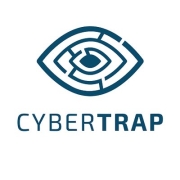Threat Deception Platforms offer advanced cybersecurity solutions designed to mislead and track attackers, safeguarding valuable assets by simulating fake network environments. These platforms are essential for proactive defense strategies.
Integrating sophisticated decoy systems, Threat Deception Platforms play a significant role in identifying threats by creating fake data and environments that deceive intruders. These solutions are tailored to detect and manage cyber threats at an early stage. They enhance an organization's security posture by providing detailed analysis and intelligence about potential breaches, helping prioritize responses to key threats, and improving overall risk management strategies.
What features are important in Threat Deception Platforms?In industries like finance and healthcare, implementation of Threat Deception Platforms involves creating realistic decoy environments that reflect the specific infrastructure and data concerns of these sectors. By aligning the deceptive elements with industry-specific parameters, these platforms tailor the detection and response mechanisms to the unique challenges faced within each field.
Organizations benefit from Threat Deception Platforms as they provide proactive defenses, reducing the likelihood of successful attacks and mitigating damages. By employing strategies that misguide potential threats, companies can protect their assets and maintain trust with stakeholders.
| Product | Market Share (%) |
|---|---|
| Commvault Cloud | 12.1% |
| Rapid7 InsightIDR | 10.0% |
| Fortinet FortiDeceptor | 8.1% |
| Other | 69.8% |

























Threat Deception Platforms enhance cybersecurity by implementing decoys, lures, and traps that mimic your actual assets, enticing attackers to engage with these instead of real targets. This interaction allows you to gather intelligence on the tactics and techniques used by attackers, enabling a proactive response. These platforms divert unauthorized users away from critical systems, minimizing potential damage. By continuously learning from interactions, they evolve to better detect and mislead threats, adding a dynamic layer to your security posture.
What industries can benefit from Threat Deception Platforms?Industries such as finance, healthcare, government, and retail benefit significantly from Threat Deception Platforms due to their high-value data and frequent targeting by cyber threats. These platforms are essential in environments where advanced persistent threats are prevalent. They provide these industries with insightful threat intelligence and a better understanding of potential vulnerabilities. They are crucial for sectors that must comply with strict regulations and standards, offering an added layer of assurance and compliance support.
Can Threat Deception Platforms integrate with existing security tools?Yes, Threat Deception Platforms are designed to seamlessly integrate with your existing security infrastructure. They typically work alongside SIEM systems, firewalls, and endpoint protection tools, enhancing your overall security without requiring a complete overhaul of current systems. This integration allows for automated responses and more comprehensive monitoring, leveraging your existing security investments to improve threat detection and response capabilities without disrupting your security operations.
How do Threat Deception Platforms aid in incident response?By identifying and tracking unauthorized users as they interact with decoy assets, Threat Deception Platforms provide valuable insights that aid in incident response. They allow you to observe attacker behavior, understand their objectives, and develop informed response strategies. These platforms can automatically alert incident response teams when an interaction occurs and provide detailed reports on the techniques used, helping teams respond more efficiently and reducing the overall impact of an incident on the organization.
What are the key components to look for in a Threat Deception Platform?When selecting a Threat Deception Platform, look for key components such as scalability, ease of integration, and the ability to simulate various IT assets, including servers, databases, and IoT devices. The platform should offer real-time analytics and reporting to support proactive threat hunting and response. A user-friendly interface and customizable deception strategies are crucial for tailoring the solution to your specific security needs. Advanced threat intelligence capabilities and automatic updating of deception tactics ensure continued effectiveness against evolving threats.